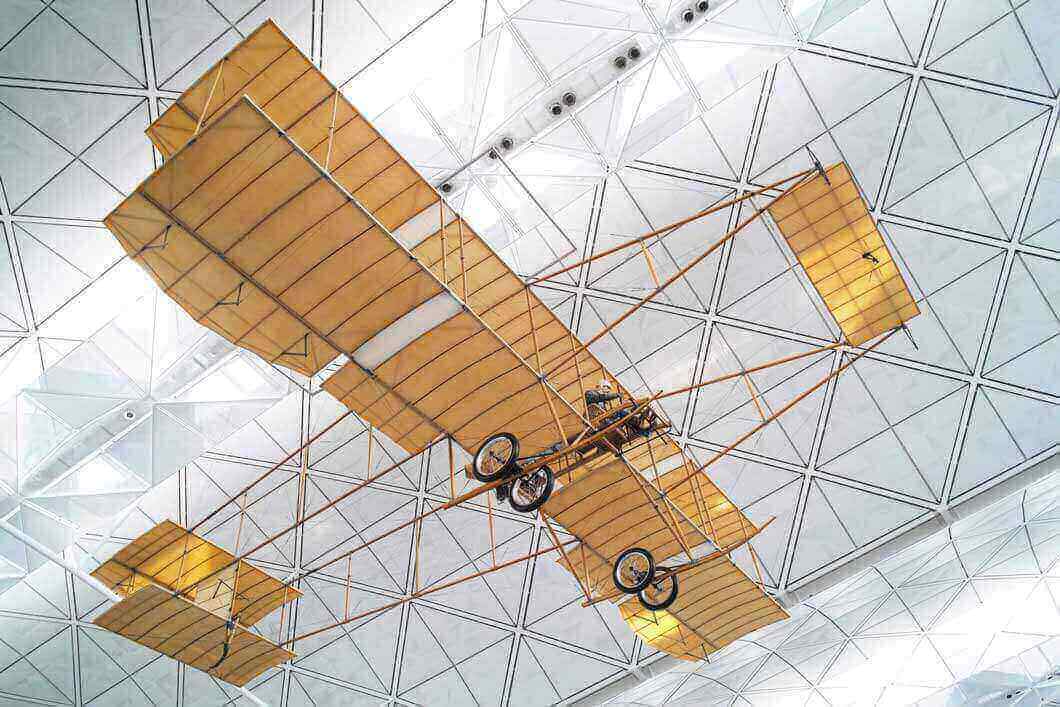Aviation, its subsystems and its impact on a sustainable, hypermobile and globalised society
12.12.2022
Mobility is one of the most fundamental features of modern societies, satisfying the ever-present need to move from one place to another. Once considered a luxury good, mobility has now become a basic commodity without which life is difficult to imagine.
The Wright Brothers created the greatest cultural force since the invention of writing. The aeroplane became the first World Wide Web and brought people, languages, ideas and values together.
Bill Gates
Aviation as a driver of a hypermobile and globalised society
In the industrialised nations, people have largely unrestricted freedom to travel and a wide choice of affordable means of transport. Anyone who wants to be mobile can be. No other means of transport conveys the feeling of freedom associated with travel as much as aviation. It is thanks to aviation that citizens of developed and increasingly developing countries can explore all corners of the world with little effort and relatively low cost. Aviation has become hugely important in our lives; whether it is to escape the daily grind of work and immerse ourselves in a relaxing environment or to make business contacts around the world. The rapid rise of air travel is testament to the development of a hypermobile, globalised society.
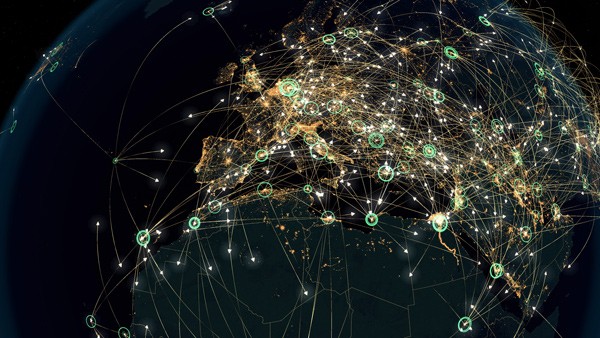
Socio-economic and ecological impacts
While mobility and aviation have a positive impact on socio-economic development and global connectivity in society and the economy, the individual gain in freedom and movement also comes at a price for the natural environment. Man-made climate change is unmistakable and forces us to question our mobility behaviour with increasing urgency. As a carbon-intensive industry, aviation contributes to global warming and has been the focus of the global climate strike movement and other concerned parties in recent years.
Aviation faces a paradoxical challenge:
- On the one hand, aviation is an important driver of global socio-economic development, direct and indirect job creation, tourism, foreign investment and international trade.
- On the other hand, air transport has a negative impact on our ecosystems, as it has so far relied almost exclusively on fossil fuels for energy and thus emits greenhouse gas emissions.
Against the backdrop of a world moving towards a more sustainable and circular economy, changing consumer attitudes and behaviour, regulatory adjustments and a global post-pandemic, the aviation industry is under intense pressure to change.
Global aviation: status quo
The aviation industry is an important sector for the economy and society as it facilitates international trade and social exchange worldwide. A network of airlines, airports and other stakeholders connects major cities and communities 24 hours a day with increasingly modern aircraft or air taxis.
As a major global employer, the industry supports 87.7 million jobs indirectly, while creating 11.3 million jobs directly. In the process, the industry generates a global GDP of $3.5 trillion.
In addition to passenger transport, air freight is an important factor in the global supply chain. In 2019, 61 million tonnes of cargo were transported by air. (ATAG, 2020)
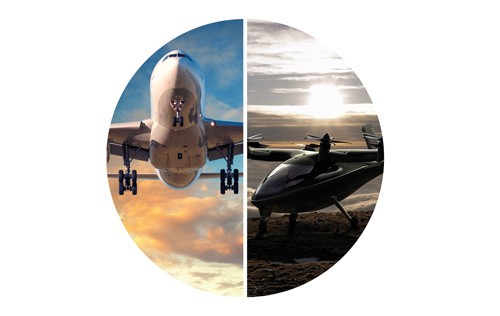
Industry development
Hardly any other industry has experienced such strong growth in recent decades as aviation. Following the global deregulation of the industry, airlines entered into fierce price competition, which resulted in ticket prices falling by an average of 22% between 1978 and 1993 (Morrison & Winston, 1997).
As a result, passengers were able to benefit from lower prices, making air travel accessible to a much larger part of the population. In addition to deregulation, technological advances such as the introduction of wide-body aircraft and later IT solutions (reservation management, online reservation systems) accelerated the decline in airline prices and continued to drive strong growth. More recently, with the introduction of low-cost carriers (LCCs), air transport became a cheap and popular form of short-haul transport. In short, air transport has seen a declining trend in ticket prices and strong growth in passengers in recent decades (Wittmer et al., 2021).
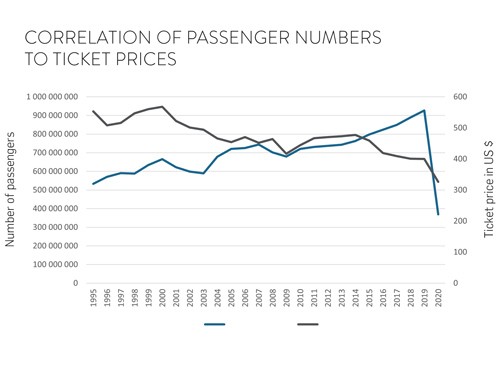
The aviation system and its actors
Air transport is an economic sector consisting of various subsystems with countless actors and complex interdependencies, which also have a high impact on the issue of sustainability.
Technology
The subsystem deals with the technological possibilities that set the framework for everything that is feasible in aviation; from basic aircraft design to decarbonisation methods. The aviation industry has always been heavily dependent on technological developments, such as aerodynamics or propulsion technology; innovations that not only have a major impact on economic development, but also on the environmental impact of the sector. This subsystem is an important influencing factor for numerous players in the aviation market. Every player in the supply system is affected in some way by the technology. Most obviously, major OEMs such as Boeing and Airbus are driving technological progress in the consolidated aircraft market.
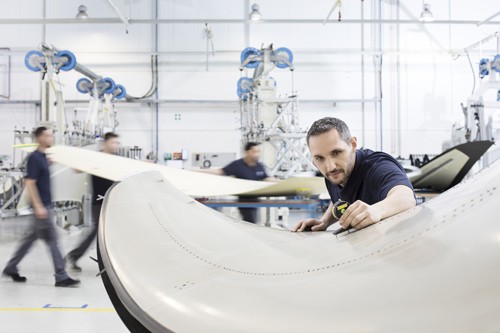
While their product development focus tends to follow an outside-in approach, where airlines largely determine OEM production with their orders, many other innovative technical approaches come from an inside-out approach, often from start-up companies. These are regularly spin-offs from university engineering departments that further develop the scientific knowledge of this other important player in the technological subsystem. The development of sustainable technologies is therefore driven by these two approaches, but also influenced by findings from other sectors, such as the automotive industry. The rapid growth of airlines is not least due to technological progress. Digitalisation has primarily driven sales, but other areas such as operations and revenue management have also been significantly influenced by technological innovations. The same applies to airports, ground services and airspace control. Air navigation service providers (ANSPs) in particular would not be able to handle today's air traffic volumes without specialised IT systems.
Social
Economic opportunities increase social welfare at the local and regional level and have a positive impact on people's living standards and lifestyles. In this context, mobility is seen as a factor that increases the quality of life and opens up access to different countries. Thus, the industry serves as a means of mass transport that helps to connect different countries and cultures. This also promotes cultural awareness and enhances multicultural cooperation. In addition, air transport enables people to reach places that would otherwise be inaccessible and can also provide necessary goods and services. On the negative side, air transport has been a major contributor to mass tourism over the past decades, which has led to the cultural over-shaping of countless destinations, among other things. Furthermore, the impact of noise on the well-being of people living near airports is a major concern. Noise can have various health effects on individuals, both medical and psychological (Wittmer et al., 2021).
Policy & Regulation
In aviation, a highly regulated industry, technological innovations are not always readily applicable due to specific regulations and recommendations. This not only slows down innovation processes, but often makes them more costly. The policy/regulation subsystem is one of the main reasons for the high complexity of the aviation system, both at national and global level. The subsystem mainly deals with issues such as safety and liberalisation, which in turn have a significant impact on the sustainable development of the industry. Compliance with the respective regulations is a prerequisite for all stakeholders and for any aviation activities. Aviation legislation is regulated at various levels.
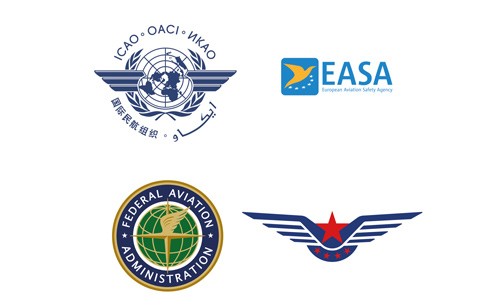
At the international level, the ICAO provides the framework for global air traffic. At regional level, authorities such as the FAA (USA), EASA (EU) or CAAC (CN) are responsible for the respective aviation regulations. Furthermore, aviation is also a plaything of politics. Especially when it comes to sustainability, it is obvious that aviation is confronted with complex political discourses from the international to the local level. It is not uncommon for the courts to ultimately have to weigh national concerns against individual interests of local residents. The strong involvement of politics results from the social and economic importance of aviation. These two subsystems are very closely linked.
Economy
If aviation were a country, it would rank 17th in terms of GDP - similar to Indonesia or the Netherlands. The economic benefits of aviation can be divided into direct, indirect, induced and catalytic effects, much of which is the income and jobs created by the aviation system. The estimated economic impacts are 11.3 million jobs and $704 billion (global GDP) in direct contribution, 10.8 million jobs and $638 billion in indirect contribution, 7.8 million jobs and $454 billion, and another 36.7 million jobs worldwide through induced effects (ATAG, 2020; Wittmer et al., 2021). Looking at these figures, it becomes clear how important aviation is and how large its share in prosperity is estimated to be. On the other hand, it also becomes clear how large the group of those affected is with corresponding demands and expectations.
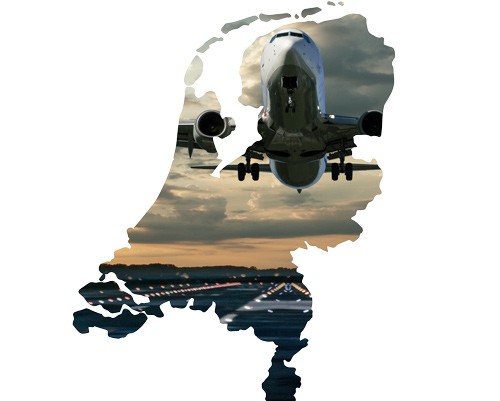
Ecology
The ecological subsystem is mainly negatively affected by air traffic, in contrast to the other subsystems. The global environmental impact of aviation includes the impact on the atmosphere and thus on the entire world. Regional and local impacts refer to the environmental effects at specific airports and in neighbouring communities. Emissions are mainly caused by the combustion process in aircraft engines, which burns a mixture of different hydrocarbons.
Conclusion
We see that due to the multi-faceted nature of air transport, there is a close interconnectedness between political, technological, economic, social and environmental issues. While each of these perspectives can make a valuable contribution to understanding air transport on its own, the complexity and interdependencies between the different aspects call for a more integrated approach to the sustainable development of the industry.
Source directory
- Air Transport Action Group [ATAG]. (2020). The economic and social benefits of air transport 2019. Air Transport Action Group (ATAG).
- Morrison, S. A., & Winston, C. (1997). The evolution of the airline industry. The Brookings Institution.
- Oxford Economics
- Wittmer, A., Bieger, T., & Mueller, R. (2021). Aviation systems – Management of the integrated aviation value chain. Springer











